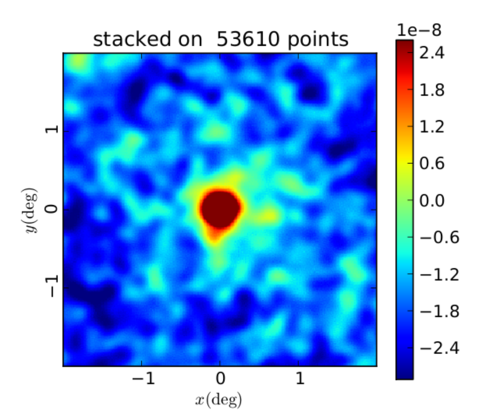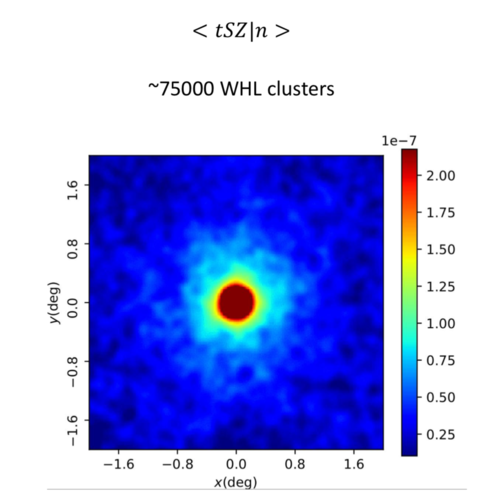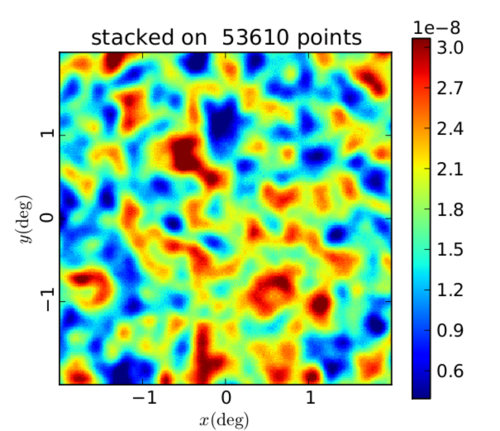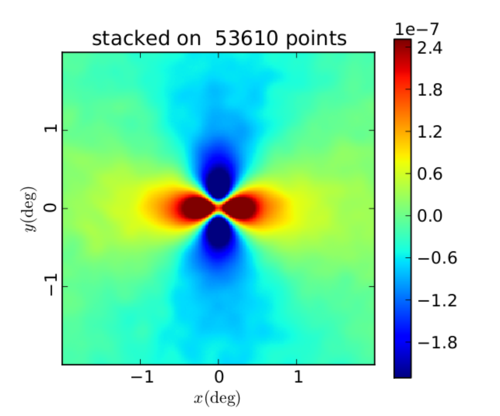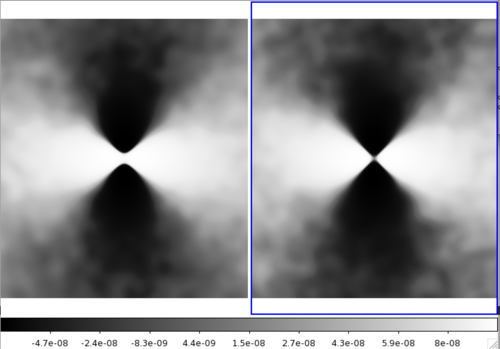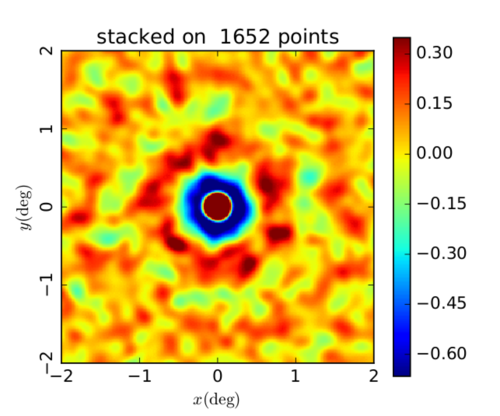Difference between revisions of "November 26th, 2018"
| Line 47: | Line 47: | ||
== ACT y-map stacked on peaks within the map == | == ACT y-map stacked on peaks within the map == | ||
| + | === Random orientation, peaks found at 1.4' scale === | ||
| + | [[File:1pt4.png|500px|Alt]] | ||
| + | === Random orientation, peaks found at 10' scale === | ||
| + | Here, the map is also smoothed to 10'. | ||
| + | [[File:10.png|500px|Alt]] | ||
Revision as of 15:36, 26 November 2018
Planck y-map stacked on RedMaPPer Cluster Catalog
In the following plots, I am using the catalog described on the website as "Y3A2 Gold 2.2.1 sof colors, redMaPPer v6.4.22+2, Full, lambda>20." There are 53,610 clusters in this catalog. I start by taking the first RA and Dec given for each cluster (defined as the "most likely center" of the cluster). Then, since the Planck maps are Healpix maps with Galactic coordinates, I convert (RA, Dec) to (l,b) using Astropy. Next, I convert (l, b) to Healpix (theta, phi) values assuming that b=0 corresponds with theta=90 degrees and that l = phi (and then theta, phi should be in radians). This is the (theta, phi) list I am inputting to COOP to identify the cluster locations on the Planck y-map.
Random orientation, map FWHM 10'
This can be compared with Connor Bevington's stack on WHL clusters:
The difference in the colorbars, I believe, is the result of stacking on some areas that were masked in the Planck map or had no data. I didn't yet have time to check to ensure that each cluster is in an unmasked region with data. Therefore some of these stacks might be 0 all over, and this affects the values in the stack when they're averaged over all 53,610 components.
As a sanity check for my (theta, phi) conversions, I wanted to ensure that this output was different from what it would be if I stacked on random (theta, phi) values. So I shifted each (theta, phi) by some amount and stacked on those points. This does come out completely random as expected:
QU orientation, map FWHM 10'
I was suspicious of this stack because it didn't seem to be centered on clusters, so I also did a stack on random points in the map and compared them side-by-side. The difference was only noticeable when scaling the colorbar in a certain way (here I am using SAO DS9 and scaling by "histogram"):
The results of stacking on cluster theta, phi values are on the left and random points are on the right.
Since using the oriented method on random points intrinsically results in an oriented stack, even though that doesn't represent real structure, I am wondering if when we do analysis on the oriented stack we need to subtract an oriented stack from random points. (i.e. Would we subtract the right from the left and analyse the residual?)
